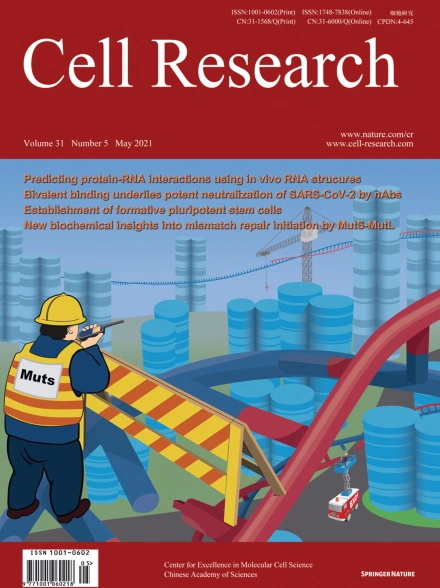
Advanced Search
Submit Manuscript
Advanced Search
Submit Manuscript
Volume 31, No 5, May 2021
ISSN: 1001-0602
EISSN: 1748-7838 2018
impact factor 17.848*
(Clarivate Analytics, 2019)
Volume 31 Issue 5, May 2021: 593-596 |
Mechanism of dopamine binding and allosteric modulation of the human D1 dopamine receptor
Youwen Zhuang1,2 , Brian Krumm3 , Huibing Zhang4,5 , X. Edward Zhou6 , Yue Wang1,2 , Xi-Ping Huang3 , Yongfeng Liu3 , Xi Cheng7 , Yi Jiang1,2 , Hualiang Jiang7 , Cheng Zhang8 , Wei Yi9 , Bryan L. Roth3,* , Yan Zhang4,5,10,* , H. Eric Xu1,2,*
1The CAS Key Laboratory of Receptor Research, Shanghai Institute of Materia Medica, Chinese Academy of Sciences, Shanghai 201203, ChinaDear Editor,
Dopamine acts as an essential neurotransmitter whose signaling is conducted through five G protein-coupled receptors (GPCRs), dopamine D1 to D5 receptors (DRD1–DRD5).1 The D1-like receptors, comprising DRD1 and DRD5, primarily couple to the Gs family of G proteins to activate adenylyl cyclase and induce cAMP production. DRD1 is the most abundantly expressed dopamine receptor in the CNS.1 It is the central receptor mediating excitatory dopamine signaling in multiple dopaminergic pathways. Dysregulation of DRD1 signaling has been directly linked to Parkinson’s disease (PD), schizophrenia, and drug abuse.1,2 Due to its fundamental functions in human diseases, DRD1 has long been the subject of intensive drug development efforts toward the treatment of neuropsychiatric diseases.3 A majority of DRD1 agonists, including the SKF compounds, targets the orthosteric pocket of DRD1, but none has passed clinical trials for neuropsychiatric symptoms to date.3
https://doi.org/10.1038/s41422-021-00482-0